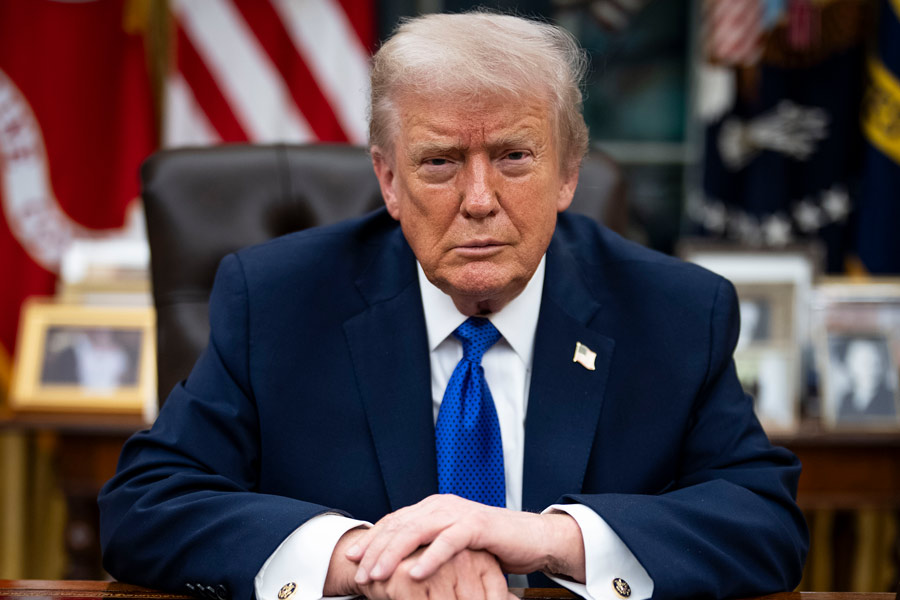“Writing for children is as easy as describing the history of the Byzantium in three words,” said Mo Willems, American author of children’s books. It’s a thought that Gulzar will endorse wholeheartedly. In his new series of books, titled Samay Post, Gulzar says, “It’s while trying to teach children that one realises what all we have to learn from them. Only when you read these books with children will you understand who the teacher is and who the student.”
It’s nothing short of a national shame that a country as vast as India, with an aeons-old tradition of storytelling, has little to show when it comes to writing for children. The one exception in this genre is Gulzar. Time and again he has created a magical world for children, through his films, songs and other non-film writing. A world that children can relate to, that does not talk down to them, that makes them laugh and look at the world with the wonder of their imagination. In this he has found willing collaborators like R.D. Burman and Vishal Bhardwaj, who share his vision and almost childlike glee and innocence in crafting these young worlds.
“I feel it is important for a writer to observe children, love them and indulge them,” Gulzar says. “Only then can you write about or for children. The books we have for children are not suitable for them. They tend to be preachy. That is the greatness of Sukumar Ray and his Abol Tabol. In India there are only three languages at this stage which have worthwhile writers for children – Bangla, Marathi and Malayalam…. And few filmmakers in Hindi cinema get the world of children right.”
Here are a few of our favourite Gulzar songs for children.
Humko mann ki shakti dena (Guddi)
A film song that became a school hymn across the country. For one, it is a prayer song that dispenses with a god entity altogether. Instead, it calls for developing confidence in one’s own self (‘khud pe hausla rahey’) and contemplation (‘Doosron ki jai se pehle khud ko jai karein’). What makes the song resonate is the impish humour that marks it filming. As Gulzar says, “It’s a prayer song, so the words could not be frivolous. Hrishi-da (Hrishikesh Mukherjee), however, had a great sense of humour, and you see it in the way it is shot.” Apparent in the expressions of the children – including Guddi (Jaya Bachchan), who is as usual late to the assembly – so typical of children who are often bored with these assembly routines. And given that Guddi is a die-hard Dharmendra fan, the line ‘Saath de to dharam ka, chale toh dharam par’ is Gulzar at his meta-best.
Sa re ke sa re ga ma ko le kar (Parichay)
A shining example of the poet’s mastery over the medium, this is Gulzar giving us the seven notes of music in words, with everyday motifs – Sa (savera, morning), Re (reshmi kirnein), Dha (dhoop). But there are also aspects of the story playing in this song. Consider, for example: ‘Papa nahin hain dhaani si didi, didi ke saath hain saare.’ Those who know their music will latch on to ‘pa’, ‘dha’ and ‘ni’ as part of the seven notes. But the line also implies that the children here don’t have a father (papa nahin hain), and it is their ‘dhaani si’ sister who is with them. The word ‘dhaani’ is open to interpretation here. It could refer to the light-green sari Jaya Bachchan is wearing in the first part of the song. It could also mean, a very Bengali connotation, someone of a short stature (Jaya Bachchan), and/or, given her character’s snappy attitude towards the new teacher in the early parts of the film, short-tempered. R.D. Burman’s innate understanding of music that will appeal to children enhances the overall experience of the song.
Masterji ki aa gayi chitthi (Kitaab)
Based on a story by Samaresh Basu, this is a rare Hindi film for children and adolescents that speaks to them in their language, without condescension. Nothing epitomises this better than this almost anthemic song. No child growing up in the 1980s will ever forget the refrain ‘VIP underwear banyan’ – so typical of what children pick up from the world around them. Gulzar says, “Have you ever seen a class when the teacher is absent? That’s what I have tried to replicate here. And thanks to Pancham’s (R.D. Burman) genius, using desks to get the rhythm the children create, it comes alive. Pancham’s sense of humour and his understanding of a child’s world were amazing. He was a child at heart and that shows in his compositions for children with me.”
A great admirer of Sukumar Ray and his nonsense verses, Gulzar’s words in this song are classic examples of this genre, with cats eating zarda-paan, mosquitoes with moustaches, and blushing cheetahs in ghunghats, all emerging from a letter. Then there’s the delightful play of words between agar-batti and magar-batti, which segues into another inspired line: ‘Agarbatti kachhua chap, aag pe baitha paani taap’. Or ‘English bolay matlab Hindi / If agar is hai but par what matlab kya / English mein algebra chhan’. Just read that line closely: if (agar), is (hai), but (par), what (kya), and you get an inkling of the writer’s understanding of a child’s psyche. All of this made delightful with the musical refrain ‘dhin-taka-taka-dhin’ and the reference to the ad, ‘VIP underwear banyan’.
Lakdi ki kaathi (Masoom)
A perennial classic which takes off from a child’s earliest plaything, a wooden horse. “Children going ‘tak-bak-tak-bak, chal merey ghodey, chal chal chal’ is something all of us have seen. When they do that, they actually imagine a horse but at the same time they know that it is not real. They are aware of that. Every child plays the role of a doctor and a teacher at some point of their life,” says Gulzar.
‘Lakdi ki kaathi’ is a triumphant amalgamation of nonsense verse with imaginative wordplay. “You must remember that children have a vivid imagination, an infinite capacity to create their own language, and as a writer you have to take that into account,” says Gulzar. “You have to give them images they can relate to, that are fun to imagine. You can see a child reacting to ‘ghodey ki dum pe jo maara hathora’.”
That is what this song does with words like ‘Ghoda pahuncha chowk mein, chowk mein tha naayi, ghodey ji ki naayi ne hazamat jo banayi’. Try translating that for meaning. But when you enter a child’s mind-space, it makes complete sense. There’s also Gulzar drawing upon his memories of Delhi with ‘Ghoda tha ghamandi, pahuncha Sabzi Mandi’ and ‘Chalta hai Mehrauli mein, ghoda apna Arbi hai’. However, the references are not just a lyricist’s whimsy. They flow organically from the screenplay, the fact that the film is set in Delhi.
The Lost Gems: Ek dafa ek jungle mein (Sadma); Dum kata (Dum Kata); Asmaan ke paar (Rockford)
His many creations for children in films include the Kamal Haasan-Ilayaraja song ‘Ek dafa ek jungle mein’ from Sadma, where the actor is narrating the tale of the blue jackal to a childlike Sridevi. As the words unfold, you can almost imagine the presence of a master raconteur sitting by a fireside, mesmerising children with his stories.
Of a different hue is the song from Rockford, whose words highlight another aspect of writing for children that Gulzar articulates. “Their language evolves with age, till they become adults. When you write for a five-year-old, the language is different from when you write for a nine-year-old.” And in ‘Asmaan ke paar’, Gulzar evokes the twilight zone of the teenage years, with their uncertainties, their hopes, with the world beyond the heavens calling out to them.
A special mention needs to be made of the song ‘Dum kata’ from the eponymous children’s film, directed by Amol Palekar. The film was a box-office disaster, which buried in its wake a gem by Gulzar, a song that is a personal favourite with him too. As he says, “There is no aspect of a tail that I have not addressed in the song.” This is Gulzar at his whackiest, eulogising a variety of tails:
Patang udey toh patang ke pichhe
Lambi latke poonch
Cycle par mushkil hai bhaiyya
Chain mein atke poonch
Gori Aishwarya ke sar pe
Chunri laage poonch…
This is only a small sample of Gulzar’s work for children.
There’s one test that any writing for children has to pass. “Apart from the fact that it is important for a child to be able to relate to it, it is paramount that writing for kids must appeal to adults as well. That has to happen. It is only then that a child will relate to it,” says Gulzar. Needless to say, the works of India’s very own Peter Pan hold up to this, appealing to the entire spectrum from age four to 84 and more.
PS: Watch this space for ‘Jungle jungle baat chali hai: Gulzar’s collaboration with Vishal Bhardwaj’ on November 15
Shantanu Ray Chaudhuri is a film and music buff, editor, publisher, film critic and writer.










